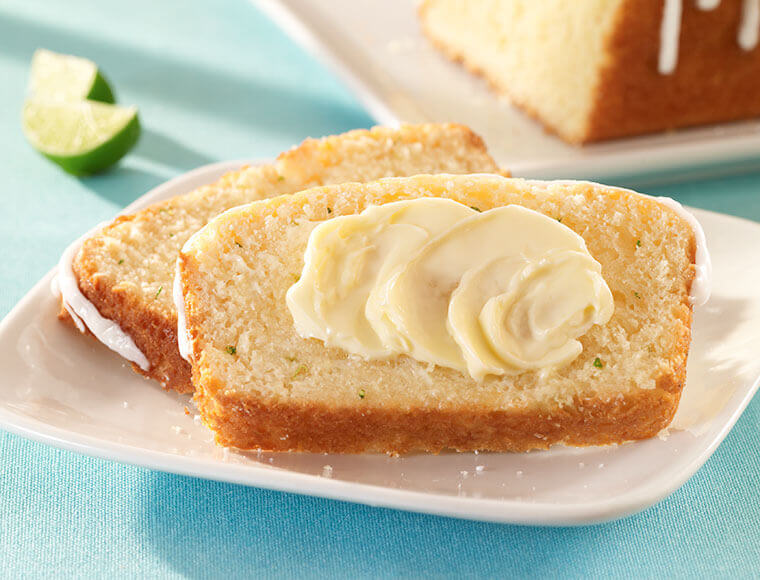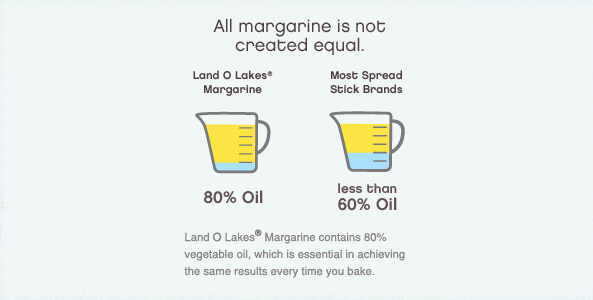

Is It a Butter, Margarine or Spread? They Are Not Created Equal.
You have choices when it comes to sticks for baking. Learn the difference between margarine vs butter vs spreadable butter and when you should use each option.
 by
Mallory
by
Mallory
 by
Mallory
by
Mallory

You may notice there is a wide variety of choices in the grocery store dairy case when it comes to sticks to use for baking. "Butter," "margarine" and "spread" are common types of stick products. It’s easy to be confused by the difference between them. Can you really use just any stick for your baked goods with confidence? The short answer is, "No." Let's explain in more detail.
Different Types of Fats
Let’s first understand what the different choices are. Most of the products you see displayed on the shelves fall into three categories: butter, margarine and spreads. According to USDA regulations, butter and margarine must contain at least 80% fat. In butter, that fat comes from milkfat. But in the case of margarine, the fat can come from vegetable sources or a combination of animal and vegetable sources. The USDA does not specify how much fat should be in the spreads category, so the fat content varies between brands. If it doesn’t say "butter" or "margarine," look at the front of the package to determine the exact percentage of fat. The only way to be sure you are buying margarine is if it clearly states "margarine" on the box.
Butter, Margarine and Spreads at a Glance
|
|
Percent Fat |
Source of Fat |
Percent Water |
|---|---|---|---|
|
Butter |
80% |
Milkfat |
Less than 20% |
|
Margarine |
80% |
Vegetable and/or milkfat |
Less than 20% |
|
Spreads |
Varies, can be less than 60% oil |
Vegetable |
Up to 40% water |
Since the fat content is not regulated in spreads, many brands will substitute water for oil. In some brands, they have increased the percentage of water up to 40%. That’s almost half water!
Baking with Margarine, Butter and Spreads
So, what happens if you bake with a spread instead of an 80% fat margarine or butter? Fat plays an important role in the structure, moistness and tenderness of a baked good. It also is necessary to aid in browning. By reducing the amount of fat, baked goods tend to turn out drier, tougher and lighter-colored. Plus, extra water in a recipe can mean soggy cookies, stale cakes and unpredictable baking.
What is Spreadable Butter?
At Land O'Lakes we have one more product to add to this list - spreadable butter. Spreadable butter is a combination of butter and oil. This combination means spreadable butter has all the flavor of butter but is easy to spread right out of the refrigerator. Spreadable butter and margarine are different products. Margarine is 80% fat and that fat comes from either a vegetable source, milkfat or some combination of the two. Spreadable butter is pure butter with just enough oil to make it spreadable from the refrigerator. We don't recommend baking with spreadable butter but it will work in a pinch!
Share Your Thoughts
Did you find this article helpful? Has it inspired you? What else would you like to know?



